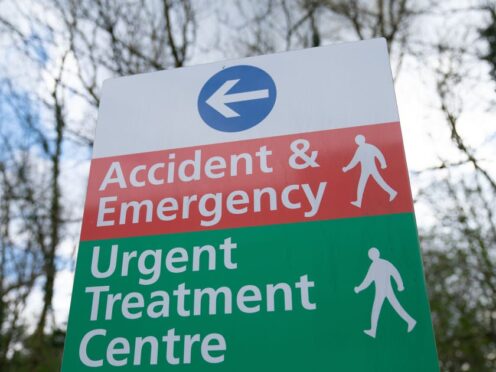The number of flu patients in hospital in England has hit a new winter high and has nearly doubled since the start of the year, figures indicate.
An average of 2,478 people were in hospital each day last week with flu, including 106 in critical care beds, according to NHS England.
The total is up 11% from 2,226 the previous week and up 89% from the beginning of January.

Flu infections this year are surging at a later point than last winter, when cases peaked at Christmas and then fell rapidly – although last’s year outbreak saw hospital numbers top 5,000, in what was the worst flu season in the UK for a decade.
This year’s outbreak has yet to see patient figures reach a similar level.
Professor Sir Stephen Powis, NHS England national medical director, said the continuing rise in flu cases showed that “winter pressures continue to hit the NHS hard”.

The latest figures for seasonal viruses also indicate that norovirus cases have dropped, with an average of 568 adult hospital beds filled in the week to February 4 by people with diarrhoea and vomiting or norovirus-like symptoms.
This is down 17% week-on-week from 688 beds, which was the highest so far this winter.
An average of 3,563 people who had tested positive for Covid-19 were in hospital last week, down 11% from 3,983 the previous week and 16% below this winter’s high of 4,245 in early January.
Covid-19 patient numbers peaked at more than 9,000 last winter.
Responding to the figures, Dr Layla McCay, director of policy at the NHS Confederation, the membership organisation for the healthcare system, said: “Amid rising winter viruses, cold snaps and industrial action by junior doctors, the pressure on the NHS in January was unrelenting.
“Winter is not yet over, flu levels are at a new peak, staff absences are high, and more cold weather could be on the horizon.
“There appears to be no light at the end of the tunnel for staff working all hours to keep patients safe.”

Separate figures published on Thursday by the UK Health Security Agency (UKHSA) indicate the rate of hospital admissions for flu patients stood at 7.3 per 100,000 people in the week to February 4, broadly unchanged on 7.4 per 100,000 in the previous week.
Rates are highest among people aged 85 and over, at 37.4 per 100,000, and 75 to 84-year-olds, at 17.2.
Emergency department attendances for people with influenza-like-illnesses continued to increase among adults aged 65 and over.
The rate of Covid-19 hospital admissions has fallen week-on-week from 5.0 per 100,000 to 4.1 and remains below levels seen last winter.

Dr Mary Ramsay, UKHSA director of public health programmes, said the drop in Covid-19 activity was “encouraging”, but added: “An increase in emergency department attendances for flu-like-illness in those over age 65 shows that flu is still circulating in those who could be more vulnerable to severe illness, despite other indicators showing a decline.
“A free flu vaccine is still available from your GP or local pharmacy until the end of March, so there is still time to get vaccinated.
“You are eligible if you are over 65, a child aged two or three, have a specific long-term health condition, are pregnant, work in healthcare, or care for others.
“If you are showing symptoms of a respiratory illness, try to limit your contact with others, especially those more vulnerable, and consider wearing a mask if you do need to go out.”
